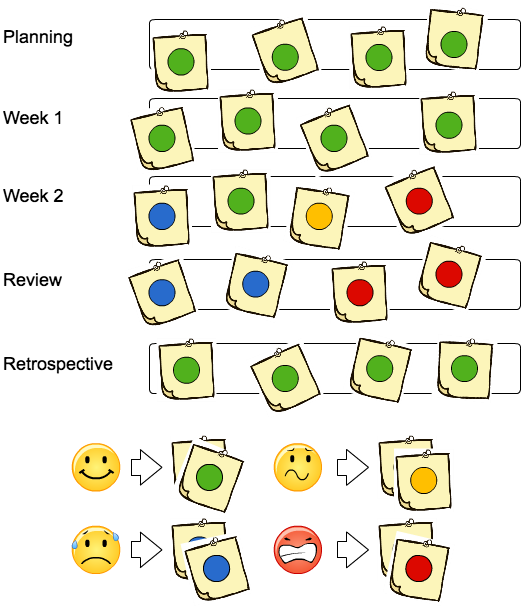I am happy to report that the PMI-ACP Community Guide project is off and running. Each day, I see new content being added. I wonder if this is how Jimmy Wales felt in the early days of Wikipedia. Our first measure of success is to get the content of each page of The Guide as close to the vision of the ACP Steering Committee as quickly as possible. Our second measure of success is to reach a tipping point, whereby the community (not the support team) is maintaining the guide. Remember, future versions of the ACP exam will be based on this Guide.
Community Guide
To reaffirm, there will not be an AgileBOK. The Community Guide of the PMI-ACP (login required) is an initiative of the PMI Agile Community of Practice to provide ongoing support for the PMI-ACP agile certification.
ACP Support Team
Lead by Joseph Flahiff of Whitewater Projects and myself, the ACP Support Team has kickstarted the Community Guide content creation process. We are empowered and 100% self-organized.
The Backlog
In order to deliver something of value to the community, Joseph and I leveraged the wiki within PMI's website to create a Product Backlog. We wanted transparency and for everyone to know what we are focused on. Every major area of the ACP exam has a page waiting to be edited. If you had a traditional product backlog, the 10 major areas that comprise the Tools & Techniques of the exam could easily be considered Epics. Each page of our wiki could be compared to a User Story. We're not estimating our work. We're just doing it.
Iteration 1
We are currently in Iteration 1, which ends on May 10, 2012. Of our 15 member team, we asked volunteers to commit to work on the first 7 pages of the first content area. At the end of each iteration, we can ask members of the ACP steering committee to review what we have done. It's important that we stay focused, have short feedback loops, and deliver something of value on a regular basis.
Eating the Dogfood
When you think of PMI, you probably think of project plans, schedules, and stuff like that. As a self-organized and empowered team, we decided what is important, to increase the chances of our success. Though there should be a predictable date of completion, based on the currently defined deliverables and length of the iterations, we're prepared for things to change. We may have to rework some of the pages. We may have some team turnover. Regardless, we can guarantee we will deliver value on a regular basis. We can guarantee there is collaboration with the community.
Joining the Team
If you are interested in creating or maintaining articles for the Community Guide, join our team! If you want to work independently, we welcome your valuable contributions.
 On March 11, 2014, I presented a talk to IIBA Baltimore on the topic of the Product Owner and the Scrum Team. I have to say, this was an awesome bunch of people to talk with. You know you're at the right place when they offer beer and crab cakes with dinner. Gotta love Charm City!
The last 10 years of Agile have focused on the team. I believe the next 10 years of Agile will focus on the enterprise. That said, should the Product Owner continue to be a single person or does it need to evolve as well? Let's cover the basics and then see how LeadingAgile has been successful at leveraging the Product Owner role at scale.
On March 11, 2014, I presented a talk to IIBA Baltimore on the topic of the Product Owner and the Scrum Team. I have to say, this was an awesome bunch of people to talk with. You know you're at the right place when they offer beer and crab cakes with dinner. Gotta love Charm City!
The last 10 years of Agile have focused on the team. I believe the next 10 years of Agile will focus on the enterprise. That said, should the Product Owner continue to be a single person or does it need to evolve as well? Let's cover the basics and then see how LeadingAgile has been successful at leveraging the Product Owner role at scale.






